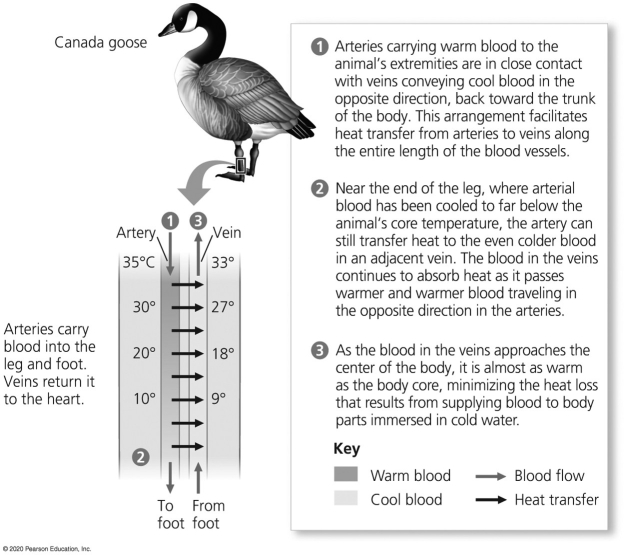Multiple Choice

-The thin horizontal arrows in the figure show that
A) the warmer arterial blood can bypass the legs as needed when the legs are too cold to function well.
B) the warmer venous blood transfers heat to the cooler arterial blood.
C) the warmer arterial blood transfers heat to the cooler venous blood.
D) the arterial blood is always cooler in the abdomen,compared to the temperature of the venous blood in the feet of the goose.
E) the goose's legs get progressively warmer as the blood moves away from the abdomen to the feet.
Correct Answer:

Verified
Correct Answer:
Verified
Q45: Juxtamedullary nephrons can concentrate salt effectively in
Q46: What do tendons hold together?<br>A)bones to other
Q47: An example of a properly functioning homeostatic
Q48: Urea is<br>A)the primary nitrogenous waste product of
Q49: The fluid with the highest osmolarity is<br>A)fresh
Q51: Interstitial fluid is<br>A)the fluid inside the gastrovascular
Q52: Most types of communication between cells utilize<br>A)the
Q53: Ammonia<br>A)is soluble in water.<br>B)can be stored in
Q54: Suppose that a patient is diagnosed with
Q55: All types of muscle tissue have<br>A)nonstriated banding